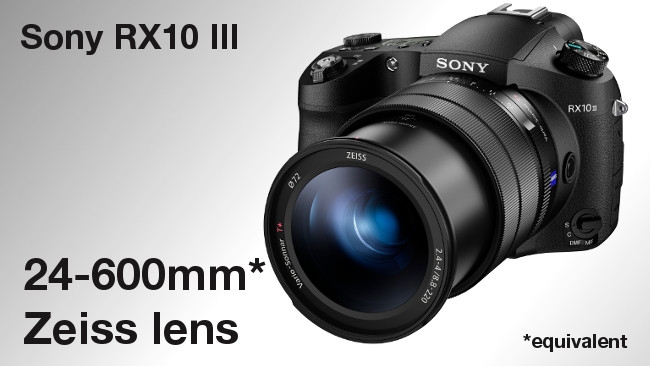
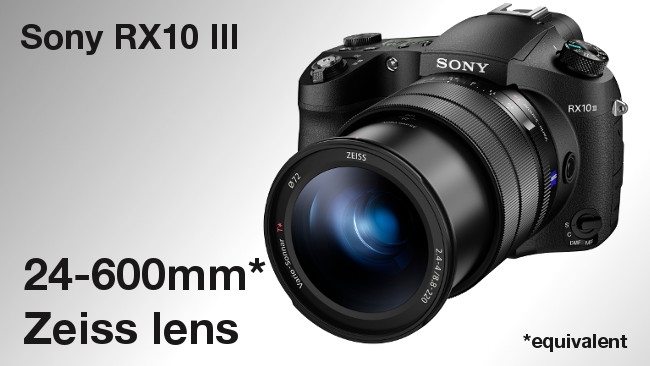 Sony RX10 III
Sony RX10 III
One of our favorite cameras gets better around this time each year. This year's edition of the RX10 (Mark III) adds a new Zeiss lens with a massive focal range.
We're big fans of Sony's RX10 line of cameras. We profiled the line's debut back in Spring of 2014 when our Editor-in-Chief, David Shapton, proclaimed that the camera "may be the camera to have with you at all times."
What came before
Such high praise may seem to straddle the line of hyperbole, but a quick recall of the camera's features reveals that there was a lot to like about the first RX10. In the waning days of the DSLR revolution, attention was beginning to shift to fixed lens options. Losing the ability to fix your lens of choice is often seen as a trade-off, but that notion is challenged by the constant f2.8 aperture, 20-200mm (eqv.) Zeiss lens included in the original RX10, which justified the $1300 price tag alone, as well as the full pixel video readout (from its 1" sensor) and fast autofocus.
Last year, Sony updated the line with the RX10 II, which brought with it 4K (UHD) recording and the introduction of the "world's first 1.0 type stacked Exmore RS CMOS," which helped to reduce the effects of rolling shutter and aliasing.
RX10 III (and its glass)
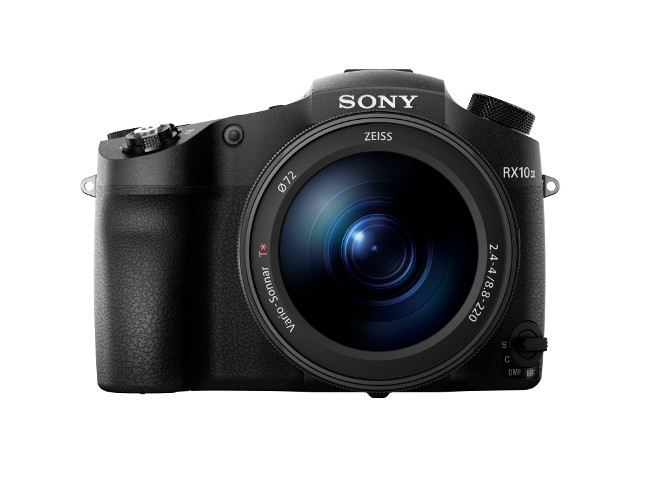
The highlight of the Sony's RX10 III camera is undoubtedly the new 24mm-600mm (eqv.) Zeiss Vario-Sonnar T* f2.4-4 lens (it's actually an 8.8-220mm lens on a 1" sensor, for you purists out there). This lens effectively replaces the 20-200mm (eqv.) lens of previous generations. Of course, the zoom range improves, from a 8.3x to a whopping 25x. While we lose a bit on the wide end, the increased telephoto end more than makes up for it on balance. And, again, the constant F2.8 is ditched for a variable max aperture, which should be expected for a zoom lens that cranks that long. The stop and a half difference between wide and telephoto max aperture is probably less than impactful you think in actual use.
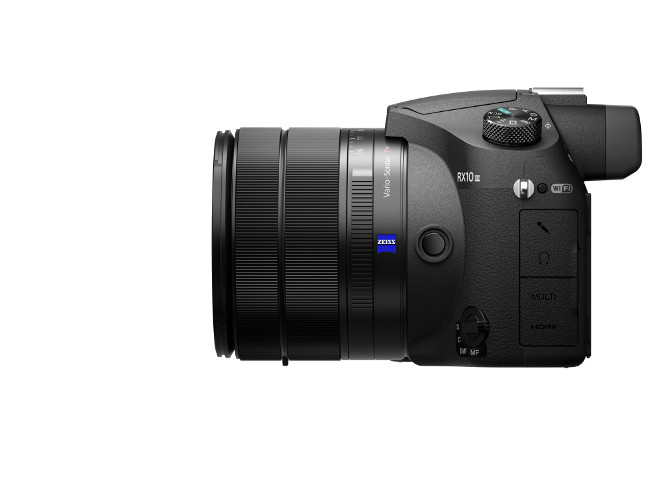 Sony RX10 III at widest end of the zoom
Sony RX10 III at widest end of the zoom
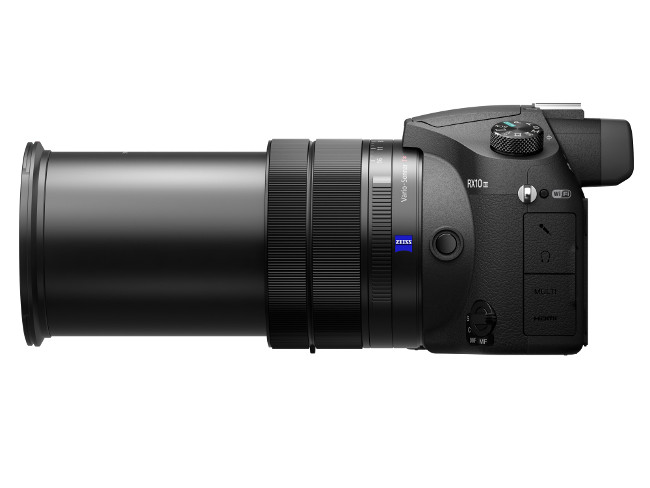 Sony RX10 III at longest end of the zoom
Sony RX10 III at longest end of the zoom
I think we can safely expect this lens to exude the high level of quality that is the Zeiss hallmark. Aside from the optical quality, the lens also adds triple lens rings for focus, zoom and aperture. To help with your long lens forays, a new Focus Hold button allows you to lock focal distance and may additionally be assigned as a "custom function button."
Like the RX10 II before it, the RX10 III will shoot 4K-UHD, but for you high frame rate shooters out there, Sony has included the ability to shoot 1000fps at 1920 x 1080. The high speed autofocus of the RX10 II has also been retained. For this generation, Sony is touting "very smooth AF performance in just (under) 0.09 second."
More than a bridge
Some critics have dismissed the RX10 camera as "Bridges," the type of camera that a photographer buys when he-or-she is thinking of getting into video, yet a less serious option for those who shoot a lot of video. As David first put it in his review of the original RX10, "with that lens, it becomes a device for capturing images from a superlative piece of glass that should actually be much more expensive. You can get professional results from this, both as a still camera and a video device. And at this price, it's hard to see why you wouldn't buy one to keep with you all the time."
If the performance of the RX10 III matches its specs, then it seems that Sony may have achieved the right balance once again with the newest RX10, while offering even greater value over its highly-lauded predecessors.
The Sony RX10 III will retail for £1,250 ($1498) and is tentatively slated to ship in April.
Tags: Production


Comments